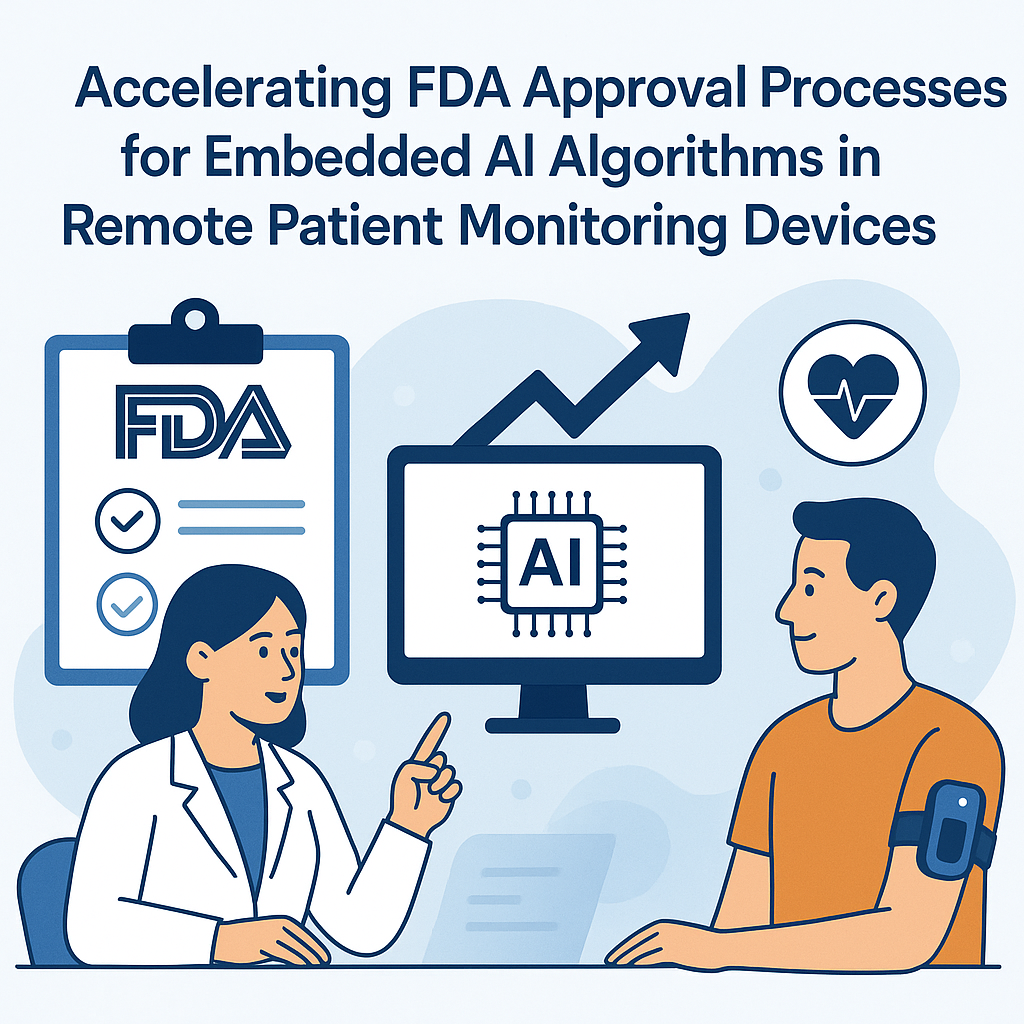Introduction
As the healthcare landscape continues to evolve, the integration of artificial intelligence (AI) in remote patient monitoring (RPM) devices has become increasingly vital. While these innovations hold the potential to enhance patient care and improve outcomes, the path to FDA approval can often be long and complex. This blog explores ways to accelerate FDA approval processes for embedded AI algorithms in RPM devices, ensuring quicker access to life-saving technologies.
Understanding the FDA Approval Process
The FDA’s approval process is designed to ensure that medical devices are safe and effective. However, the incorporation of AI algorithms adds layers of complexity due to:
- Data Privacy Concerns: Handling sensitive patient data requires stringent compliance with regulations.
- Algorithm Complexity: The dynamic nature of AI algorithms can make standard evaluation processes challenging.
- Regulatory Framework: Existing regulations may not fully address the nuances of AI-driven technologies.
Challenges in Accelerating Approval
Several challenges currently hinder the acceleration of FDA approval for AI algorithms in RPM devices:
- Insufficient Guidance: The lack of clear guidelines specific to AI in healthcare creates uncertainty for developers.
- Long Review Times: Comprehensive evaluations can lead to protracted timelines, delaying patient access.
- Post-Market Surveillance: Continuous monitoring of AI algorithms post-approval adds additional regulatory burdens.
Strategies for Accelerating Approval
To overcome these challenges, several strategies can be implemented:
1. Collaborative Frameworks
Developers can work closely with the FDA and other regulatory bodies to create frameworks that facilitate faster approvals:
- Engage in pre-submission meetings to clarify expectations.
- Participate in pilot programs designed to test new regulatory approaches for AI technologies.
2. Enhanced Data Collection
Robust data collection methods can support the validation of AI algorithms:
- Leverage real-world evidence (RWE) to demonstrate efficacy and safety.
- Utilize diverse datasets to train AI models, ensuring they are representative of the patient population.
3. Modular Approval Processes
Implementing modular or incremental approval pathways can streamline the process:
- Allow for phased submissions, where algorithms can be approved based on initial functionalities.
- Facilitate continuous updates and improvements post-approval, reducing the burden of re-evaluation.
4. Adaptive Regulatory Models
Adopting an adaptive regulatory approach can help accommodate the evolving nature of AI:
- Implement iterative testing and feedback loops during development.
- Encourage ongoing dialogue between developers and regulators to adapt to new findings.
Best Practices for Developers
For developers aiming to expedite FDA approval for their RPM devices, adopting best practices is essential:
- Transparency: Maintain open lines of communication with regulatory bodies throughout the development process.
- Documentation: Keep thorough records of data usage, algorithm training, and testing results to support approval submissions.
- Stakeholder Engagement: Involve healthcare professionals and patients in the development process to gather valuable insights and validate needs.
Conclusion
The integration of AI algorithms into remote patient monitoring devices represents a significant advancement in healthcare, but it is crucial to navigate the FDA approval process effectively. By understanding the existing challenges and implementing strategic approaches, developers can accelerate the approval timeline, ultimately leading to faster patient access to innovative technologies. Collaboration, enhanced data practices, modular approvals, and adaptive regulatory models are key components in fostering a more efficient pathway for AI in healthcare.



